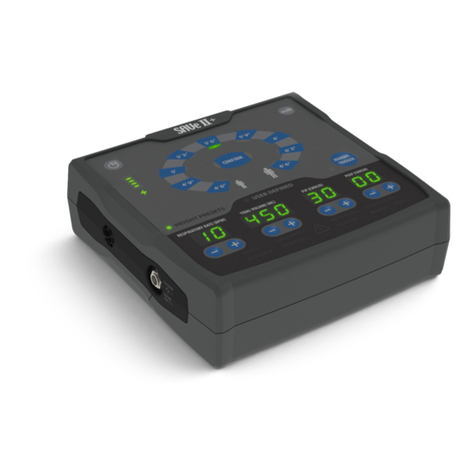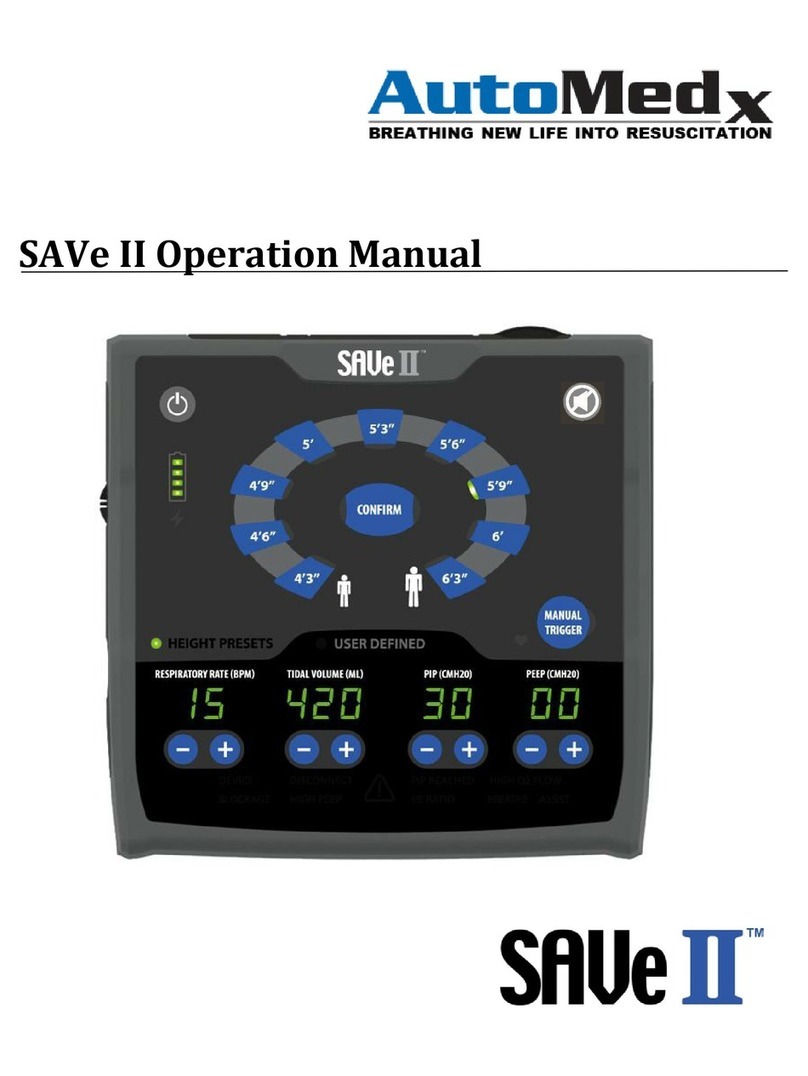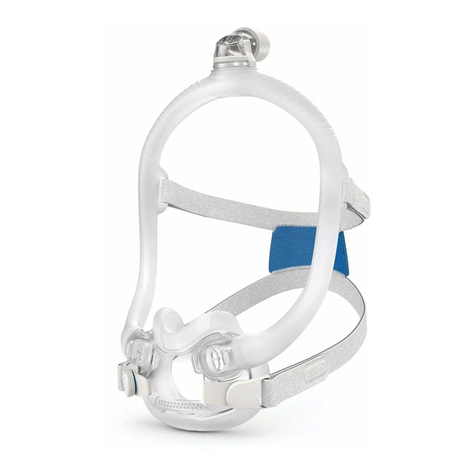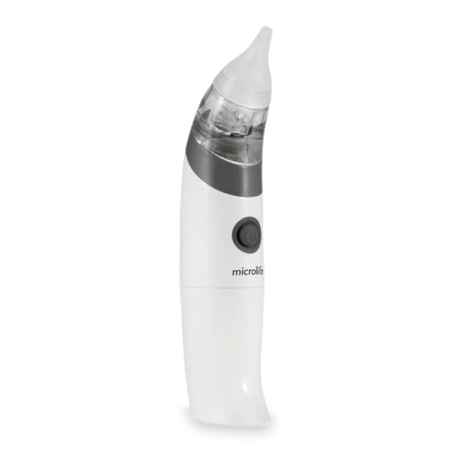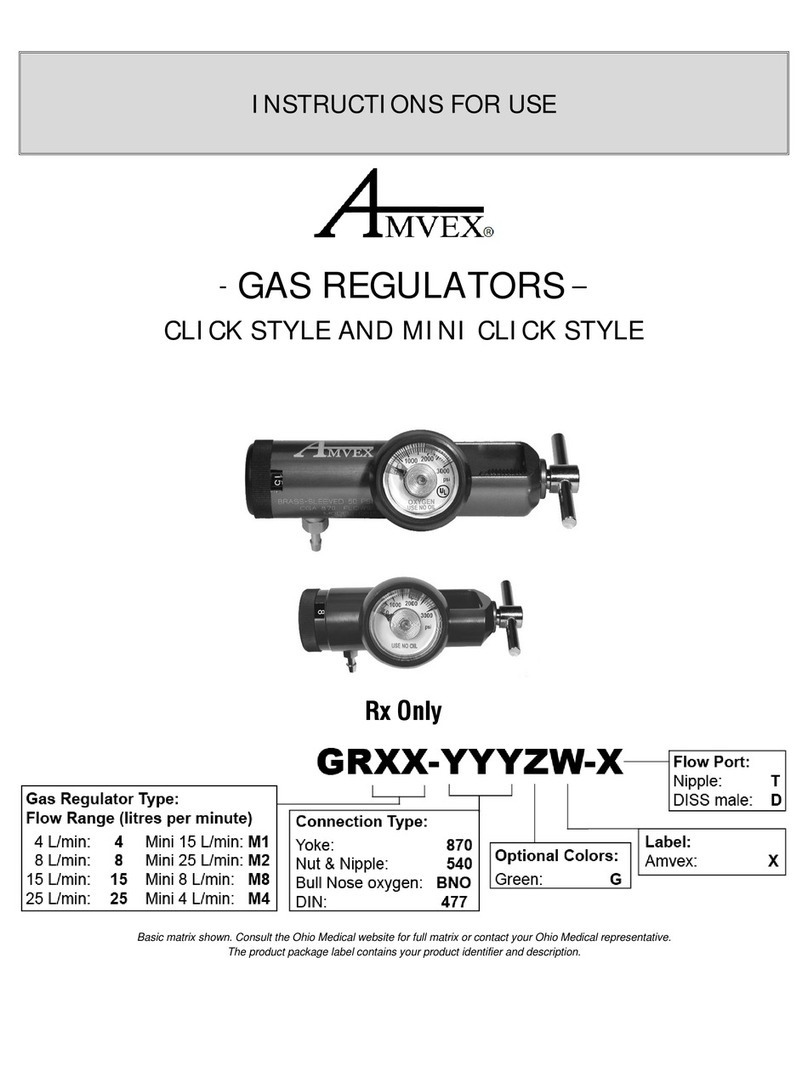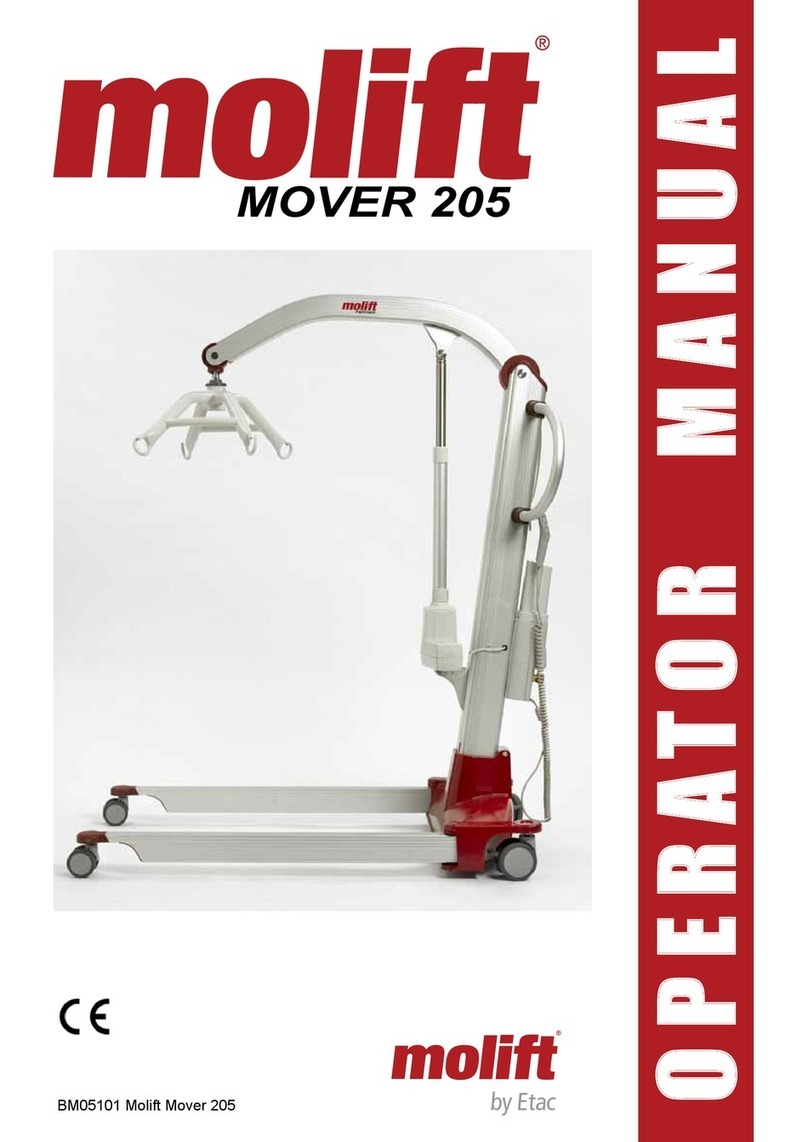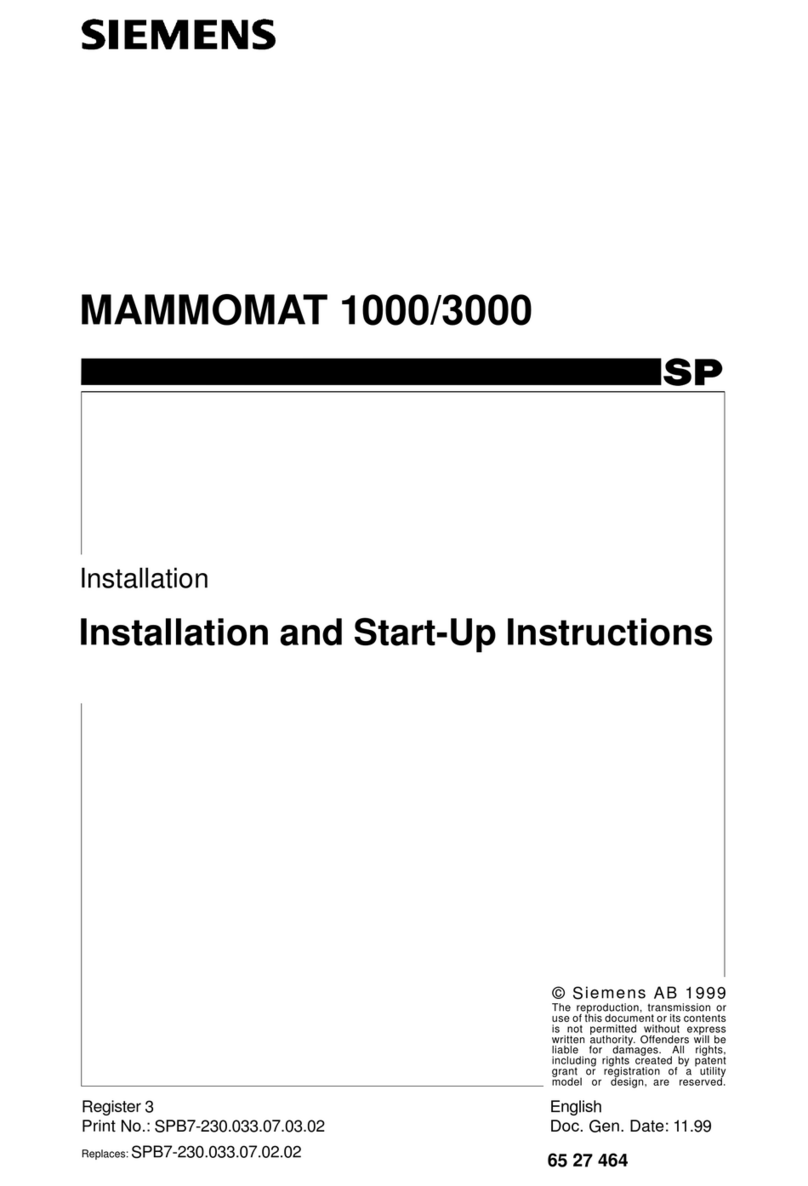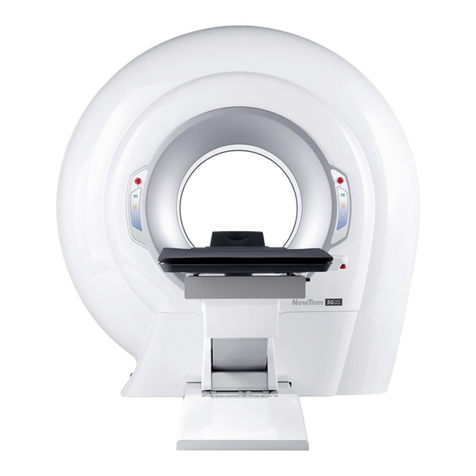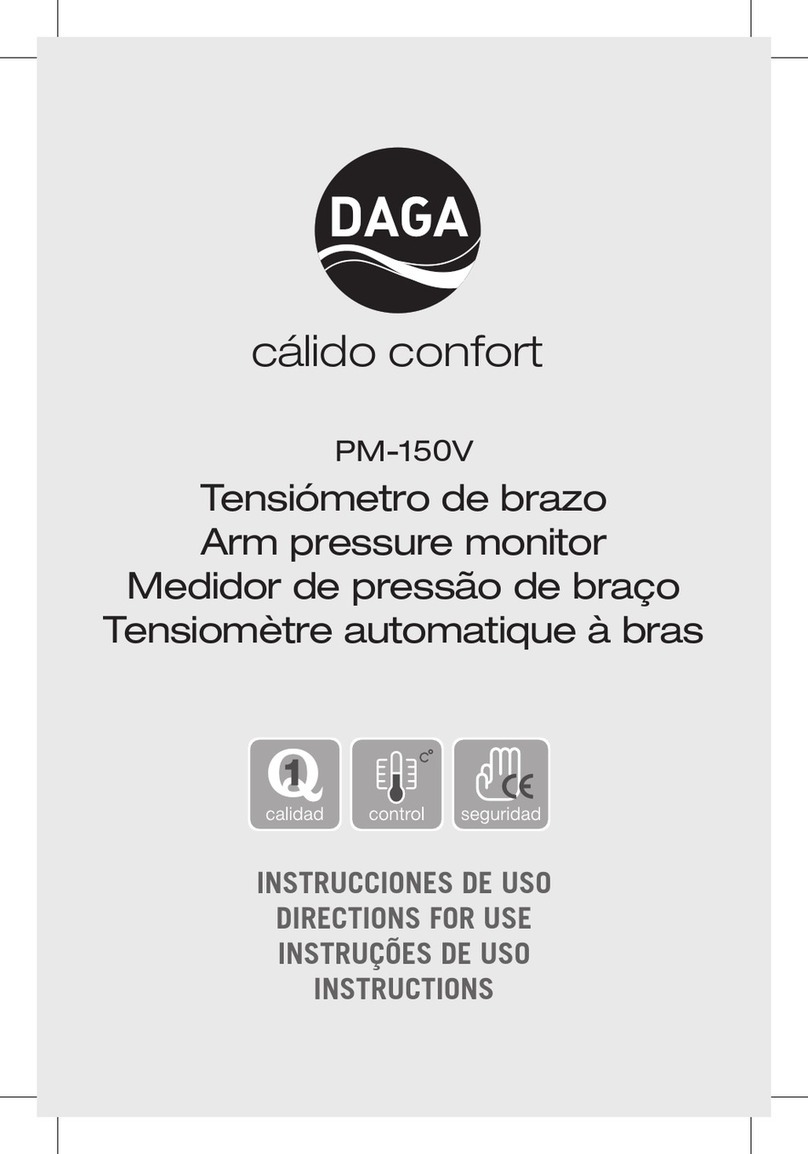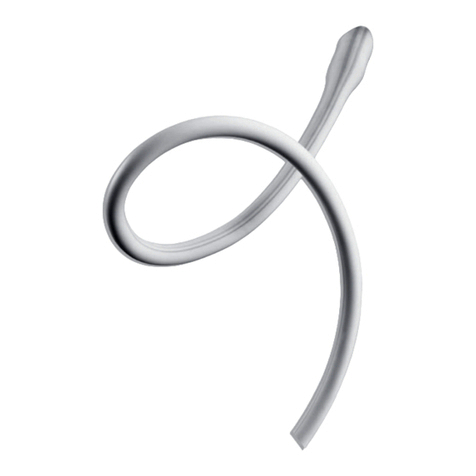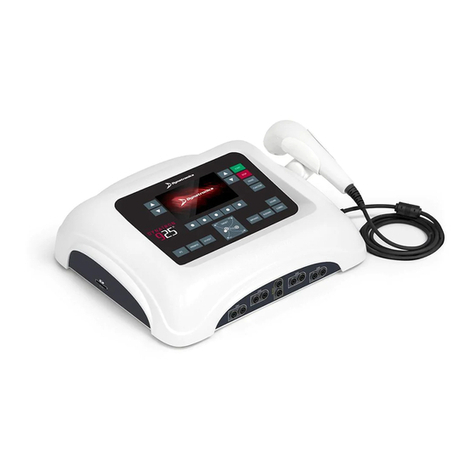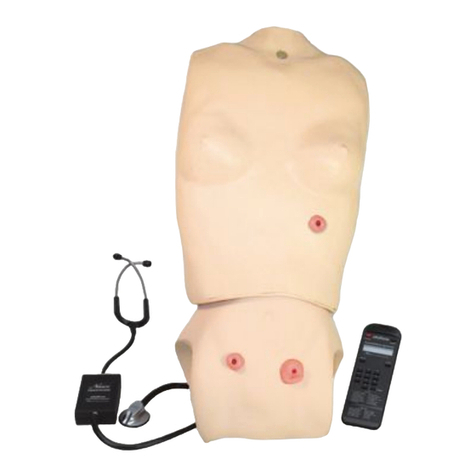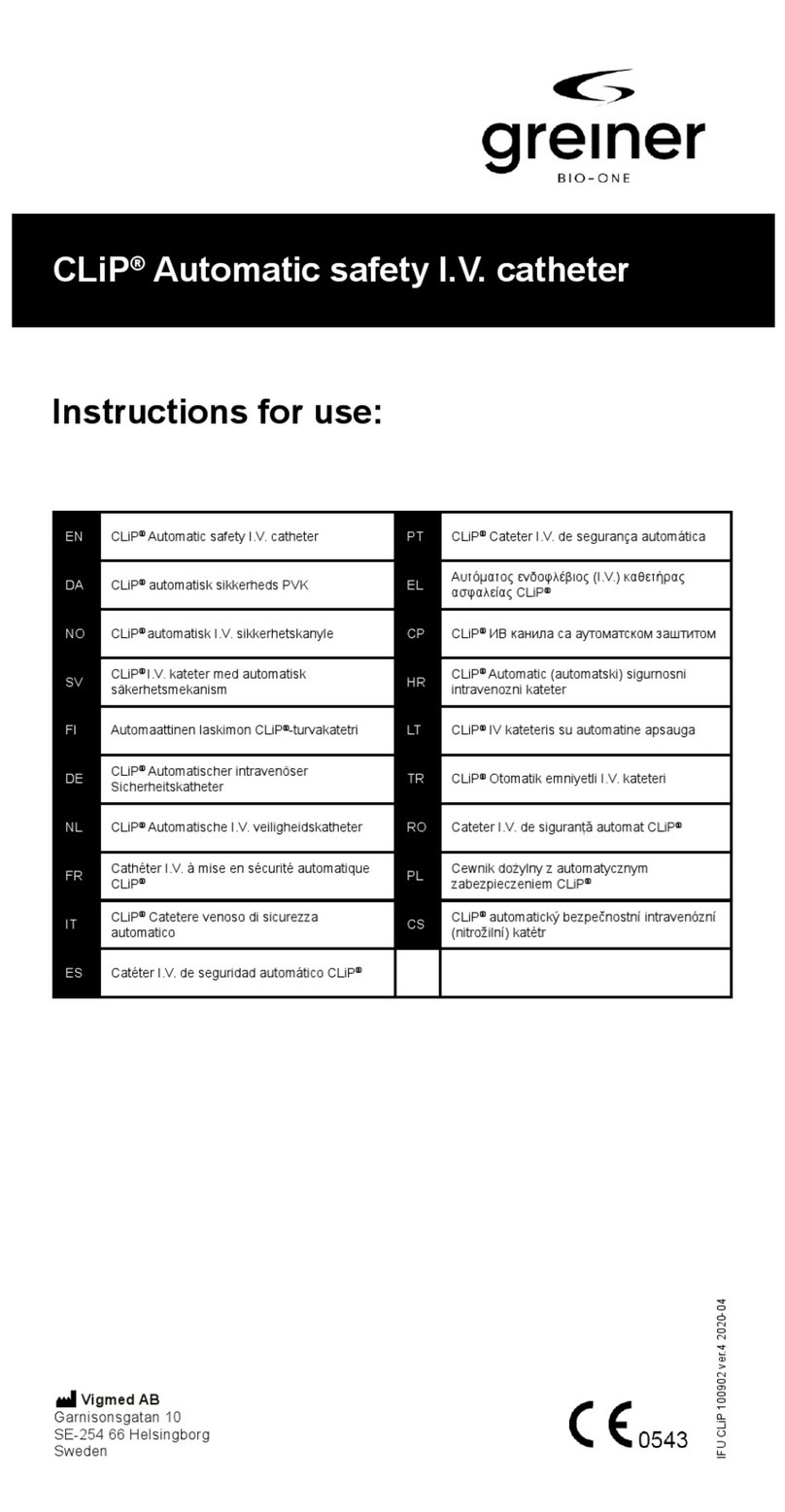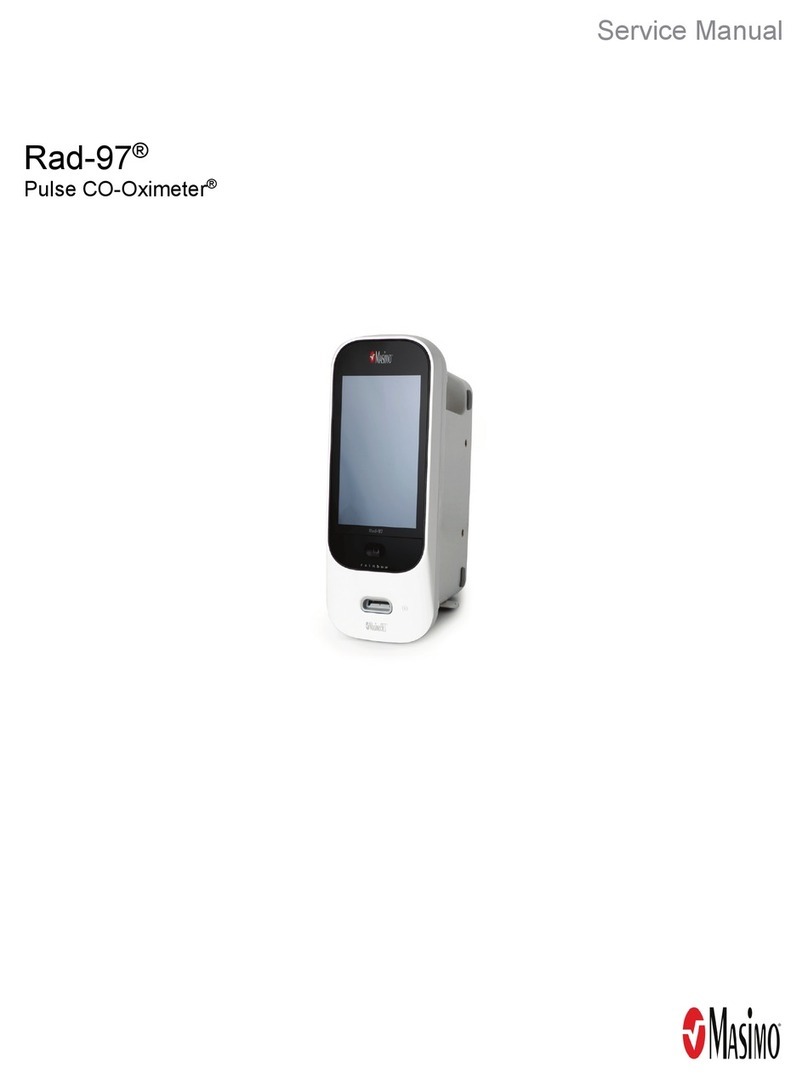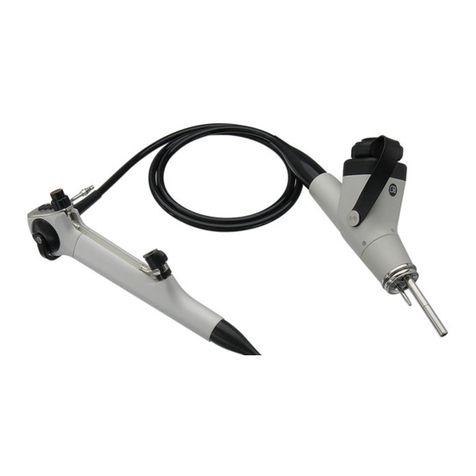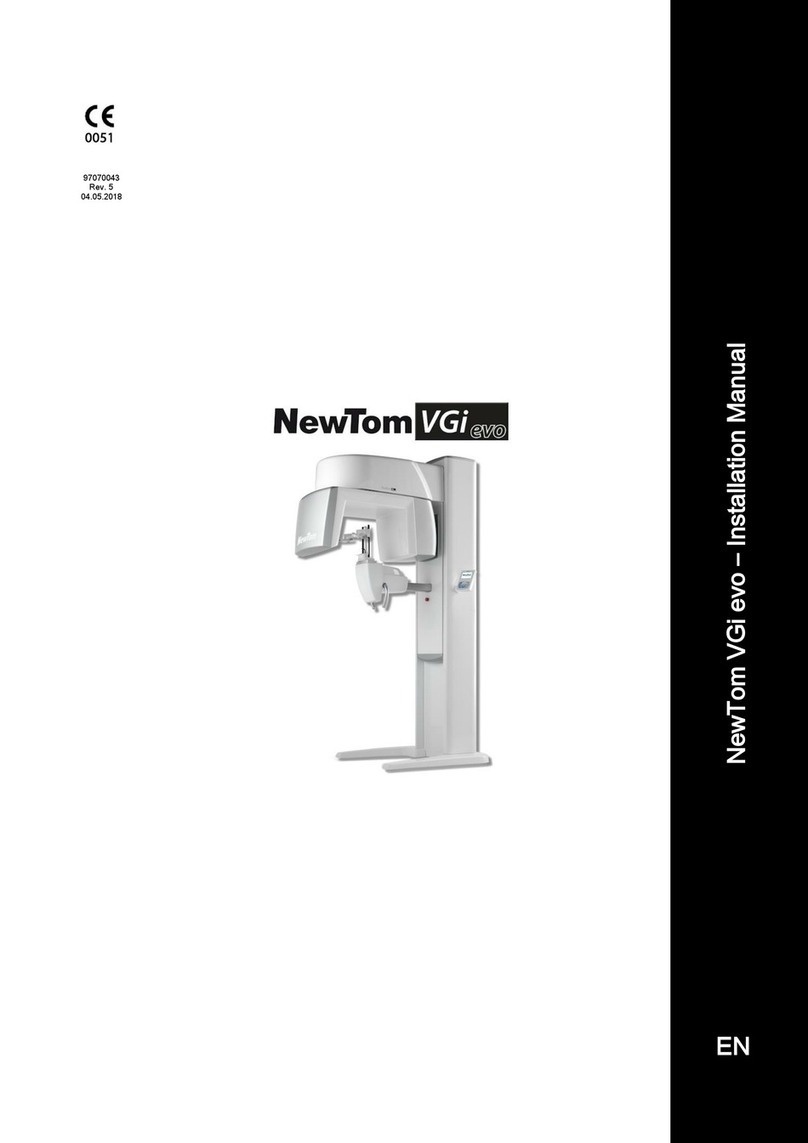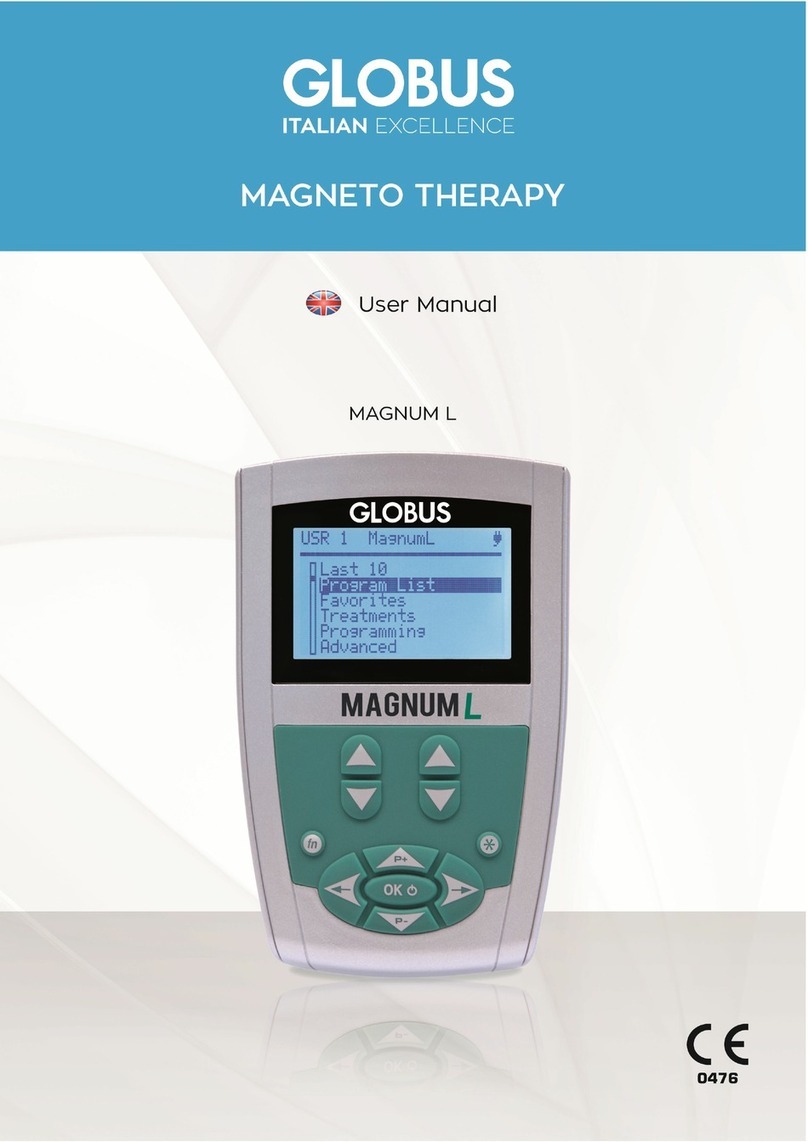AutoMedx SAVe II+ User manual

SAVe II+ Ventilator Operator’s
Guide
INSTRUCTION FOR USE
+

Contact Information
Manufactured For:
AutoMedx, LLC
Plano, TX 75024
Phone: (888) 617-2904
www.AutoMedx.com
Authorized Representative in Europe:
(Regulatory Affairs Only)
Emergo Europe
Prinsessegracht 20
2514 AP The Hague, The Netherlands
Tel: (31) (0) 70 345-8570
Fax: (31) (0) 70 346-7299
Document Version
M42110 Rev 5.0 (04/20); Firmware Version R2.0.0
Please go to www.automedx.com/support for the most recent versions firmware, software and
documentation.
FDA Tracking Requirements
U.S. Federal Law (21 CFR 821) requires the tracking of ventilators. Under this law, owners of
this ventilator are required to register the device and to inform AutoMedx if the device is sold
or given to another organization or destroyed. This allows AutoMedx to notify you of safety
updates, a recall or software updates. Please register the device at
http://automedx.com/registration/device.
To register, you will need to provide the following:
Model Number and Serial Number
Name of Responsible Party
Title of Responsible Party
Email address of Responsible Party
Organization name
Street address
City, State, Zip
Contact phone number
Disposition of the device
SAVe II+ OPERATION MANUAL > Page 2

Notice to Operators
Operating or servicing this device without a complete understanding of its characteristics
may cause harm to the patient or user and may permanently damage the device.
The SAVe II+™ is designed for use by trained personnel (under the direction of a physician,
if applicable) and in accordance with applicable laws and regulations. This manual
describes how to operate and respond to the ventilator, but does not include instructions on
how to respond to the patient. Please contact AutoMedx if the instructions in this manual
conflict with your protocols. Federal law (U.S.A) restricts this device to sale by or on the
order of a licensed medical practitioner. Outside the United States check local laws for any
restrictions that may apply.
Please note:This device is intended to be used for invasive ventilation whenever possible.
This device is not optimized for mask ventilation. Consider using invasive ventilation instead
of mask ventilation whenever possible. Please note all indications for use and other
applicable contraindications in this Manual.
Service procedures, including annual calibration verification tests, routine and non-routine
maintenance operations are described separately in the SAVe II+™ SERVICE MANUAL
(p/n:: M42147). For service information see http://automedx.com/service.
SAVe II+ OPERATION MANUAL > Page 3

TABLE OF CONTENTS
Preamble 3
Notice to Operators 4
FDA Tracking Requirements 4
Safety Information 6
General Warning Statements 7
Caution Statements 8
Use of Symbols 10
INTRODUCTION 11
Device Overview 11
Indications for Use 12
Contra-Indications 12
Use Environment 12
Training Requirements 12
Features 13
Risks & Benefits 13
DEVICE DESCRIPTION 14
User Interface 14
Description of Controls, Indicators and Displays 15
REFERENCE & NAME 15
DESCRIPTION 15
1 Feature available in devices programmed with firmware release R1.0.4 or later 15
Device Labeling 16
Alarm Dashboard 18
Device Disposables & Accessories 19
PREPARE FOR USE 20
USING THE SAVe II+ 23
Setup for Use 23
Manually Triggered Breaths 33
Clearing Debris from Breathing Circuit 35
Alarm Overview 36
Alarm Quick Reference Guide 37
RESPONDING TO ALARMS 40
MAINTENANCE 45
REPLACE CONSUMABLES 47
STORAGE 48
SCHEDULED MAINTENANCE 48
APPENDIX A– SPECIFICATIONS 49
APPENDIX B – REGULATORY INFO / LIMITED WARRANTY 50
APPENDIX C – PRINCIPLES OF OPERATION 54
SAVe II+ OPERATION MANUAL > Page 4

Safety Information
Operators MUST read and understand the following information about Warning and
Caution and statements BEFORE operating the SAVe II+™. General warnings and
cautions are listed below. Specific warnings appear throughout the manual where
pertinent.
WARNING
“WARNING” statements alert the reader to potentially hazardous situations, which, if not
avoided, could result in death or serious injury.
CAUTION
“CAUTION” statements alert the reader to potentially hazardous situations, which, if not
avoided, could result in equipment damage. These situations could indirectly cause death
or serious injury if the equipment damage causes the ventilator to operate improperly.
AS
FOUND
AS LEFT
SAVe II+ OPERATION MANUAL > Page 6

General Warning Statements
Restricted Use - The SAVe II+ is a restricted device that must be used according to its
intended use by properly trained and qualified personnel under the direction of a physician
and in accordance with applicable laws and regulations.
Patient Monitoring - Qualified personnel must constantly monitor patients. Such personnel
should be prepared to troubleshoot alarms, address equipment malfunctions and
circumstances where equipment becomes inoperative.
Extended period operation - If the Save II+ is used for extended periods, it is recommended that
the operator monitor blood gases, continuous oximetry and clinical signs to ensure optimal oxygenation
and ventilation. This device is to be equipped with expired volume monitoring equipment and CO2
monitoring equipment for measurement of the expiratory carbon dioxide concentration before being put
into service.
Alternative ventilation - An alternative means of ventilating the patient should be available at
all times.
Pre-Use Functional Check - The operator should perform a quick functional check to ensure
proper operation before connecting to a patient.
Audible Indicators - Do not allow the ventilator’s alarm speaker port to become covered or
obstructed in any way by stickers, labels, clothing, sand, mud, debris or other equipment.
Noisy Environments - Alarms may be difficult to hear in noisy environments. Take extra
precautions to closely monitor the patient and ventilator in these environments. Verify
capability to hear the audible indicator.
Visual Alarm Indicators - Do not cover or obstruct visual alarm indicators in any way. Always
have the user interface in view.
Ventilator Presets - Ventilator HEIGHT PRESETS may only be used on adult patients. Do
not use presets when ventilating children. Presets are intended to aid operators with the initial
setup but may not be appropriate for extended periods or in all situations. Operators should
refer to appropriate guidelines or their medical director to determine the suitability of these
presets for a given situation.
Sand/Dust/Debris Inside Manifold – Do not operate the SAVe II+ if sand, dust or other
debris have entered the ports.
Equipment Damage/Malfunction - Do not operate the SAVe II+, any components, or
accessories that appear to be damaged, fail checkout tests, or malfunction in any way.
Discontinue use and immediately contact an authorized service technician or AutoMedx. If
equipment is damaged or behaves in a way that is inconsistent with normal operation, stop
SAVe II+ OPERATION MANUAL > Page 7

use of the device immediately, unplug, power off the device, and disconnect external oxygen.
Preventative Maintenance - Failure to follow preventative maintenance procedures
described in this manual could result in device malfunction. Refer to
http://automedx.com/maintenance for more information.
Battery - If you suspect the internal battery is damaged, take the unit out of service
immediately.
Accessories - Serious harm to the patient may result from the use of unauthorized parts or
accessories. Only use accessories approved by AutoMedx. Refer to
http://automedx.com/accessories for more information.
Use with Oxygen Concentrator - Oxygen concentrators are not intended as a primary
source of oxygen and a back-up oxygen source should always be available.
NOT MRI Compatible - Do not put the SAVe II+, any components, or accessories inside an
MRI machine.
Use Outside Specified Normal Operating Conditions - The performance of the SAVe II+
may be materially affected if it is used outside of the specified normal operating conditions.
Contaminated Environment - Use appropriate precautions. The debris filter is designed to
stop particulates, not chemical or biological agents.
Cross Contamination - Do not reuse the breathing circuit as it may cause cross
contamination between patients. A patient treated by mechanical ventilation is at risk of
infection. Dirty or contaminated equipment is a potential source of infection. Clean the
ventilator and its accessories regularly and systematically before and after each use and
following any maintenance procedure to reduce the risk of infection.
Airway Obstructions - Vomitus and other debris may obstruct the patient end of the patient
breathing circuit. Refer to instructions on clearing debris from the patient breathing circuit .
Unintentional Changes - In order to prevent accidental changes to the settings or
inadvertently shutting off the device, verify the user interface is protected from unintentional
contact.
Secure Device - During evacuation or transport, it is strongly recommended that the SAVe II+
be secured to the patient. Failure to properly secure the SAVe II+ could damage the device
and could harm the patient by dislodging the breathing circuit or airway.
Fire Hazard - If using supplemental oxygen, avoid smoking or open flames. Leaks at oxygen
connections can cause dangerous O2 levels in the vicinity of the leak. To avoid the risk of
ignition, visually inspect oxygen connections before and after connecting supplemental O2
and take measures to properly ventilate the area. Do not use oil, grease, or combustible
lubricants (only those approved for oxygen use) in contact with any part of the ventilator,
regulator, or cylinder.
Personal Injury and Electrical Shock - To avoid electric shock hazard, do not open the
enclosure casing and do not use batteries, AC adapters, cables, or external power supplies
with visible signs of damage. Only use power supplies approved by AutoMedx. Refer to
http://automedx.com/accessories for more information.
SAVe II+ OPERATION MANUAL > Page 8

Caution Statements
Risk of Equipment Interference - Potential electromagnetic interference may occur at
levels greater than 20 V/m. Avoid use of the device in environments that may have high
electromagnetic levels. The AC adapter (BATTERY CHARGER, P/N:M42090) and its
associated cables are in compliance with the requirements of IEC 60601-1-2.
Service Personnel Qualifications - All servicing and repair of the SAVe II+ must be
performed by a service technician qualified by AutoMedx. To request a SAVe II+ SERVICE
MANUAL (P/N: M42147) and for qualification requirements refer to
http://automedx.com/service for more information.
Charging Battery/External Power - Only use the battery charger specified for use with
the SAVe II+. The battery should be charged in accordance with the instructions.
Wet Environments - If using the SAVe II+ in a wet environment take precautions and
protect the device by covering it with a protective barrier.
Storage Environment - Storage of the SAVe II+ outside the specified storage
environment may materially impact device performance and permanently damage and/or
shorten the life of the device.
Battery Replacement & Disposal - The SAVe II+ battery should only be replaced by
qualified service personnel batteries should be disposed of according to local
environmental legislation. Refer to SAVe II+ SERVICE MANUAL (P/N M42147:).
Transport of Lithium-Ion Batteries - Regulations govern the transportation of lithium-ion
batteries and devices that have lithium-ion batteries. Check the appropriate statutes to
ensure compliance before transporting the device and / or the batteries.
Uncertain Power Sources / Automobile Power Outlets - Before connecting the SAVe II+
AC power supply to uncertain power input sources, verify the SAVe II+ internal battery is in
good condition and fully charged. Connecting to an improperly rated power source may
damage the AC power supply, preventing the SAVe II+ battery from charging.
Autoclave/Sterilization - Never place any part of the SAVe II+ or its accessories in an
autoclave. Unless otherwise indicated, the SAVe II+ and its accessories are shipped clean,
but not sterile.
Liquids – To avoid inadvertent damage, do not pour or spray liquids directly on the SAVe
II+. If liquid cleaners are used, spray on a lint free cloth, then use the cloth to clean the
SAVe II+ and its accessories.
SAVe II+ OPERATION MANUAL > Page 9

SAVe II+ OPERATION MANUAL > Page 10

Symbols Glossary
Symb
ol
Title & Usage
Symbol
Title & Usage
READ OPERATOR’S MANUAL
CAUTION
ON/OFF POWER BUTTON
CONSULT INSTRUCTION FOR USE
MUTE
DO NOT REUSE
CLASS II EQUIPMENT
DATE OF MANUFACTURE
TYPE BF APPLIED PART
MANUFACTURER
ONE-WAY VALVE
AUTHORIZED REP (EUROPE)
ALTERNATING CURRENT
WASTE CONTAINER
DIRECT CURRENT
CATALOGUE NUMBER
SERIAL NUMBER
LATEX FREE
BATCH CODE
CE MARKED PRODUCT
USE-BY DATE
BATTERY LEVEL
DO NOT USE IF PACKAGE IS
DAMAGED
CHARGE
SAVe II+ OPERATION MANUAL > Page 11

NON-STERILE
COMPRESSION RATE
FRAGILE, HANDLE WITH CARE
DECREASE PARAMETER
TEMPERATURE LIMIT
INCREASE PARAMETER
IP24
ENCLOSURE PROTECTION RATING
PATIENT HEIGHT
INTRODUCTION
FIGURE 1: MULTIPLE VIEWS OF SAVe II+
Device Overview
The SAVe II+ is designed to be used in pre-hospital, field hospitals, outpatient
environments, hospitals, ICUs, transport environments, or any other healthcare
environment requiring the use of a ventilator. The SAVe II+ can be used in lieu of a bag
valve mask (BVM) in the pre-hospital environment or during inter-and intra-hospital
transport. It is a simplified ventilator that is designed to support a wide range of situations
and environments.
SAVe II+ OPERATION MANUAL > Page 12

The SAVe II+ uses a battery-powered compressor to deliver air to a patient for up to 8.5
hours on a single charge. To support use in austere environments, where compressed
oxygen is unavailable or ill advised, the device does not require compressed oxygen.
However, FiO2 can be increased where compressed oxygen or an oxygen concentrator is
available.
Responders can quickly deploy the SAVe II+ by selecting the patient’s height. The unit dials
in a preliminary TIDAL VOLUME and RESPIRATORY RATE appropriate for adults of that
size. After initial setup, users with an appropriate level of training can fine-tune the settings.
To mitigate the risk of patient injury, airway pressure is monitored and users are alerted to
potentially dangerous low and high pressure situations. In a high-pressure situation, the
pump will stop if the pressure reaches the PEAK INSPIRATORY PRESSURE (PIP) cutoff.
The PIP setting is adjustable but defaults to 30 cmH2O. Visual alarm indicators located at
the bottom of the user interface help the user quickly troubleshoot issues.
SAVe II+ OPERATION MANUAL > Page 13

Indications for Use
The SAVe II+ series are intended to provide ventilatory support for adults during CPR or
when positive-pressure ventilation (PPV) is required to manage acute respiratory failure
(ARF) or other situations where mechanical ventilation is needed. The SAVe II+ series
are appropriate for adults that weigh at least 45 kg (99lb). It is intended to be used in
pre-hospital, field hospitals, outpatient environments, hospitals, ICU’s, transport
environments or any other healthcare environment requiring the use of a ventilator.
Federal law (U.S.A) restricts this device to sale by or on the order of a licensed medical
practitioner. Outside the U.S.A. check local laws for any restrictions that may apply.
Contra-Indications
ABSOLUTE CONTRAINDICATIONS
The SAVe II+ should not be used in situations where positive pressure ventilation (PPV) is
contra-indicated.
RELATIVE CONTRAINDICATIONS
Do not use the device for extended periods without monitoring blood gases. As duration
of use increases, the need for close monitoring of CO2 and O2 levels also increases.
Do not set PEEP above zero (0) when performing CPR.
Spontaneously breathing patients may not synchronize with the ventilator. Consider
discontinuing use if a spontaneously breathing patient has difficulty synchronizing with
the device.
This device is not optimized for mask ventilation. Consider using invasive ventilation
instead of mask ventilation whenever possible.
Use Environment
NORMAL OPERATING ENVIRONMENT
The SAVe II+ is intended for use in any healthcare environment that requires the use of
a ventilator. Performance specifications are based on use in environments with ambient
temperatures of 5 to 45°C (41 to 113°F), relative humidity from 15 to 95%, and
atmospheric pressures from 70 to 110 kPa.
EXTREME OPERATING ENVIRONMENT
Attempting to operate the ventilator outside the temperatures range of -10 to 50°C (14 to
122°F) for more than 10 minutes may result in ventilator failure and harm to the patient.
WARNING: The performance of the SAVe II+ may be materially affected if it is used
outside of the specified normal operating conditions. If at the discretion of the medical
director, the device is used outside of the specified normal operating conditions, but
within specified extreme operating conditions, the operator must practice extra patient
vigilance. Do NOT at any time operate or store the device in environments outside
SAVe II+ OPERATION MANUAL > Page 14

specified extreme operating environments. This may result in ventilator failure and/or
harm to the patient.
Training Requirements:
The device is intended for use by and under the supervision of trained healthcare
professionals, e.g., doctors, nurses, emergency medical technicians, respiratory
therapists, paramedics and those certified to perform CPR. All operators regardless of
experience or training must be familiar with the contents of this manual and be prepared
to provide primary response to a respiratory emergency.
Features
Height-based adult presets enable rapid setup
Presets dial in lung-protective ARDSnet-based parameters (~6 ml/kg) based on ideal
body weight
Small size and weight make it one of the most portable ventilators on the market
Ventilate a patient on the internal battery for 10 hours (runtime varies based on
settings)
Adjustable tidal volume (TV), respiratory rate (RR), peak inspiratory pressure (PIP)
and positive end expiratory pressure (PEEP)
Alarm dashboard simplifies troubleshooting
No compressed gas tank required
Deliver FiO2 up to 100% using included oxygen reservoir and flow-regulated oxygen
source
Displays breath-to-breath PEEP and PIP measurements
Risks & Benefits
The SAVe II+ is designed to enable clinicians with extensive training, or a medic, first
responder, or other clinicians with limited training to provide life-sustaining ventilation to a
patient. The device is easy to use, lightweight, and intended to be used in any
healthcare environment that requires the use of a ventilator. The operator simply selects
the height of the patient and the device dials in an ARDSnet protocol recommended tidal
volume of 6 ml/kg of ideal body weight. These presets may not be appropriate for all
patients or all conditions. The operator must continue to monitor the patient and make
adjustments as necessary.
The SAVe II+ offers a breath-to-breath consistency not achievable with a bag valve mask
(BVM). This is especially important in high stress situations where studies have
demonstrated rescuers are prone to hyperventilating patients. The SAVe II+ delivers a
consistent tidal volume at a consistent rate. In an urgent first-responder situation, the
SAVe II+, unlike a BVM, frees up the responder to address other injuries, attend to other
patients or further assist in the evacuation. The SAVe II+ will provide up to 10 hours of
ventilation on a full charge (time varies depending on settings and patient condition). The
SAVe II+ will detect a patient’s inspiratory effort and automatically trigger a breath.
SAVe II+ OPERATION MANUAL > Page 15

Unlike pneumatic resuscitators, the SAVe II+ does not require compressed air to
operate, however it will accept low-pressure supplemental oxygen when a higher FiO2 is
needed. If in a combat zone, relying on high-pressure oxygen tanks poses a fire and
explosion hazard. These tanks tend to be large and only ventilate for a short period of
time. If in a hospital or other clinical setting, refer to the instructions in this manual for
how to set desired FiO2.
The operator administering care must monitor the patient to ensure adequate gas
exchange is occurring. The SAVe II+ is designed with multiple system checks to monitor
proper operation of the device and safety of the patient. If an alarm condition occurs, the
SAVe II+ will emit both a visual and audible alarm. In addition, depending on what
triggered the alarm, the SAVe II+ will limit functionality as necessary to avoid patient
injury. For example, the device will trigger an alarm and cutoff power to the pump when
the delivery of additional air exceeds the PEAK INSPIRATORY PRESSURE (PIP) limit.
This safety feature is designed to prevent over inflation and alerts the medic to fix the
fault that triggered the alarm.
DEVICE DESCRIPTION
✓User Interface
✓Device Labels
✓Alarm Dashboard
✓Device Disposables & Accessories
User Interface
Device controls, indicators and displays are located on the front panel of the device and
are organized based on task for rapid setup and troubleshooting.
The device is controlled using buttons. With the exception of POWER ON/OFF, MUTE
and MANUAL TRIGGER, control changes require confirmation to prevent inadvertent
changes. Controls requiring confirmation are associated with adjusting ventilator
parameters and require operators to select (press) the appropriate HEIGHT PRESET or
+/- parameter control button until the desired setting is reached then press CONFIRM.
The parameter display will blink with the prospective setting for 10 seconds or until the
CONFIRM button is pressed. If not confirmed, the device will revert back to the current
device setting and the numerical parameter displays will turn solid.
Green LED indicators communicate the current normal operating status of the device.
Red alarm codes and the audible alarm indicator signal an alarm condition. Solid
indicators are intended to only communicate information such as current device settings
or past alarm conditions. Blinking indicators are intended to signal that operator
intervention is needed due to a control change requiring confirmation or an active alarm
condition.
Green numerical parameter displays communicate device parameter settings and
measured pressures. Similar to blinking indicators, blinking parameter displays are
intended to signal that operator action is needed to confirm a setting. If the CONFIRM
SAVe II+ OPERATION MANUAL > Page 16

button (see above) is pressed when all of the parameter displays are solid then
measured pressures (PIP & PEEP) will be displayed for 3 seconds.
SECTION
DESCRIPTION
UPPER UI PANEL
(Gray)
Primary indicators, displays and controls generally used
during initial setup.
LOWER UI PANE
(Black)
Secondary indicators, displays and controls generally used
to monitor and fine tune ventilator parameters.
ALARM PANEL
(Black – Bottom
of UI Panel)
Alerts operator to potential issues with operation of device.
SAVe II+ OPERATION MANUAL > Page 17

Description of Controls, Indicators and Displays
REFERENCE & NAME
DESCRIPTION
1
POWER ON/OFF
Control used to turn the device on and off. Press for 1 second
to turn on. Hold for 3 seconds to turn off. The high priority
audible alarm indicator will activate 1 second prior to shut
down.
2
ADULT HEIGHT
PRESETS
Control and indicator used to set default ventilator parameters
based on patient height and monitor current setting.
3
BATTERY LIFE
Indicates remaining battery life.
4
AUDIBLE ALARM
INDICATOR
Indicates an active alarm condition.
5
EXTERNAL POWER
Indicates external power is connected.
6
ADULT HEIGHT
PRESETS
Indicates device set using preset patient height parameters.
7
USER DEFINED
Indicates device set to user defined parameters.
8
RESPIRATORY RATE
Control and display used to set the RESPIRATORY RATE (RR)
and monitor the set number of breaths delivered each minute.
9
TIDAL VOLUME
Control and display used to set the TIDAL VOLUME (TV) and
monitor the set volume in milliliters of gas delivered each
breath.
10
PIP
Control and display used to set the PEAK INSPIRATORY
PRESSURE (PIP) limit (pressure cutoff). Once the setting is
confirmed the display stays fixed, however, the device
measures the peak pressure breath to breath. To see the last
measured PEAK INSPIRATORY PRESSURE at the patient
connection port press the CONFIRM button1.
11
PEEP
Control and display used to set the POSITIVE
END-EXPIRATORY PRESSURE (PEEP) and display the set
PEEP of each breath. By pressing the CONFIRM button during
normal operation, the device will display the measured PEEP
maintained in the breathing circuit at the end of exhalation1.
12
COMPRESSION
RATE
Indicator blinks at a rate of 100/minute to aid users performing
chest compressions when the device is in MANUAL / CPR
mode (RR set to zero (0).
13
MANUAL TRIGGER
Control used to deliver a breath at the set tidal volume.
14
CONFIRM
Control and indicator used to prevent unintended changes.
Blinking indicates the ventilator parameter settings must be
confirmed to become active. When all parameter settings are
confirmed (solid) and no changes are pending, pressing the
CONFIRM button will cause the most recent measured PIP
and PEEP values to be displayed in the PIP and PEEP
parameter displays for 3 seconds (Refer to instructions)1.
15
MUTE
Silences an active audible alarm for 120 seconds. New alarm
will override MUTE. If an alarm condition is still present after
120 seconds the audible alarm will resume.
SAVe II+ OPERATION MANUAL > Page 18

1 Feature available in devices programmed with firmware release R1.0.4 or later
SAVe II+ OPERATION MANUAL > Page 19

Device Labeling
FRONT PANEL LABEL / USER INTERFACE
FIGURE 2: USER
INTERFACE
SAVe II+ OPERATION MANUAL > Page 20
Table of contents
Other AutoMedx Medical Equipment manuals

